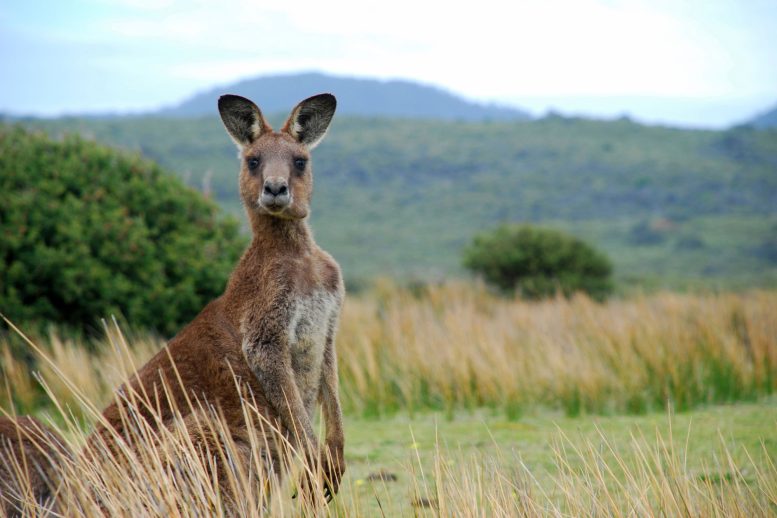Scientists identify Australia’s scariest predator
- June 6, 2024
- 0
Kangaroos and wallabies fear humans, “super predators,” more than dogs, devils or wolves. There are no large, scary carnivores like lions and wolves in Australia. As a result,
Kangaroos and wallabies fear humans, “super predators,” more than dogs, devils or wolves. There are no large, scary carnivores like lions and wolves in Australia. As a result,

Kangaroos and wallabies fear humans, “super predators,” more than dogs, devils or wolves. There are no large, scary carnivores like lions and wolves in Australia. As a result, native marsupials such as kangaroos and wallabies show relatively little fear of dogs and other predators, possibly due to their evolutionary inexperience with large mammals. But this does not take into account the 50,000-year presence in Australia of the most dangerous predator on Earth – the human “super predator”.
New research by Western University biology professor Liana Zanett, in collaboration with Calum Cunningham and Chris Johnson of the University of Tasmania, shows that kangaroos, wallabies and other Australian marsupials fear humans much more than other predators. The results of the research were recently published in the journal. Proceedings of the Royal Society B.
These results significantly strengthen the findings of similar studies by Zanette and colleagues and others in North America, Europe, Africa, and Asia; This shows that wildlife around the world are much more afraid of the human “super predator” than lions, leopards, pumas, bears. wolves or dogs.
For this new study, Zanette and his colleagues worked in a Tasmanian eucalyptus forest and experimentally showed that kangaroos, wallabies and other marsupials were 2.4 times more likely to flee when they heard a human voice than dogs, Tasmanian devils or wolves. Each species in the marsupial community showed at most the same pattern; It avoided humans about twice as often as the most feared predator (dogs, which in any case were dogs and were the most wary of humans).
“These results greatly expand the body of empirical evidence that wildlife around the world perceive humans as the most feared predator on the planet,” said Zanette, a renowned wildlife ecologist. “The very significant human fear demonstrated here and in similar recent experiments may have striking ecological consequences, as other recent studies have found that fear alone can reduce wildlife populations and that human fear can have cascading effects on multiple species across the landscape.”
To conduct their experiments, the team used a hidden, automatic speaker camera that captured the reactions of people talking calmly, dogs barking, growling Tasmanian devils, and more when triggered by an animal walking a short distance (about 10 meters, or 30 feet). non-threatening controls such as wolves howling or sheep bleating.
“Global studies show that humans kill prey at significantly higher rates than other predators, making humans ‘superpredators,’ and the deep-seated fear that humans will appear everywhere in the wild is consistent with humanity’s unique lethality,” Zanette said. said. “Humans are ‘invisible killers’ because we often don’t see ourselves as top predators, let alone the most dangerous, but wildlife clearly thinks otherwise and accepts us as we are.”
Source: Port Altele
As an experienced journalist and author, Mary has been reporting on the latest news and trends for over 5 years. With a passion for uncovering the stories behind the headlines, Mary has earned a reputation as a trusted voice in the world of journalism. Her writing style is insightful, engaging and thought-provoking, as she takes a deep dive into the most pressing issues of our time.